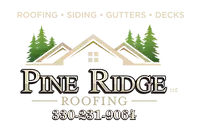Glenmont Roof Damage by Weather Conditions and Insurance Claims - A Comprehensive Guide
Your residence is not just a home; it’s a sanctuary. The role of your roof in upholding its safety and security is pivotal. However, when the inevitable roof damage by weather conditions strikes, understanding the various types of damage caused by the elements, mastering the insurance claim process, and implementing effective roof maintenance practices become crucial for safeguarding your investment.
This all-encompassing guide is your companion in navigating through the essentials, empowering you to protect your home and confidently handle “roof damage by weather conditions and insurance claims.”
In Glenmont, roof damage resulting from severe weather conditions such as storms, high winds, tornadoes, and hail is a frequent occurrence, and Pine Ridge Roofing is poised to provide support in addressing these issues.
Key Takeaways
Table of Contents
Glenmont Roof Damage - Types of Weather-Related Roof Damage
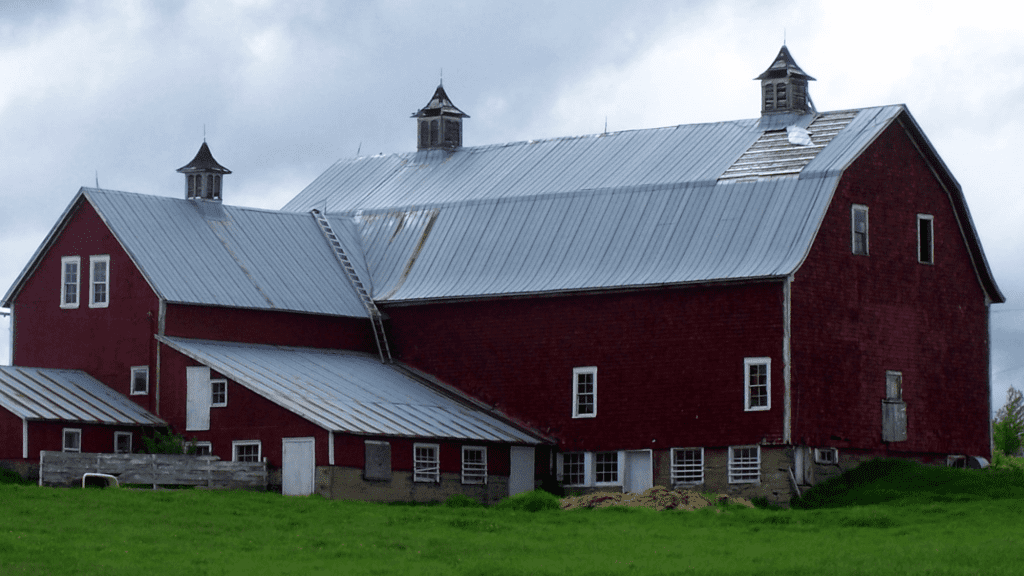
In Glenmont, roof damage by weather conditions is really common. Weather can be unpredictable, and it can wreak havoc on your roof. Wind, hail, and rain or snow are the most common culprits of weather-related roof damage, often leading to insurance claims and costly repairs or replacements.
Protecting your home requires recognizing the signs of storm damage and comprehending how these forces impact your roofing materials.
Is roof damage covered by insurance? For home insurance to provide coverage for your roof damage expenses, it is essential to establish that the damage was a direct result of an extreme weather event.
Wind Damage
In Glenmont, roof damage caused by high winds can silently jeopardize the condition of your roof. This damage may manifest as missing shingles, lifted flashing, or cracked tiles, and in severe cases, it might result in the complete displacement of the roof. Despite appearing minor initially, these damages can escalate over time, leading to leaks and structural issues that necessitate initiating the roof insurance claim process.
Repairing an older roof introduces challenges, particularly with less flexible and prone-to-cracking shingles. It is imperative to involve a qualified roofing specialist for a meticulous roof inspection and to promptly address any damage.
Gaining insight into the wind insurance coverage specifics in your homeowner’s insurance policy is pivotal for preparedness, especially during adverse weather conditions such as storms.
Wind damage can stem from various weather events, including severe storms or hurricanes. Consistently monitoring your roof’s condition post such events is essential, and taking swift action upon observing visible signs of wind damage is critical. If, for instance, a sizable tree branch is discovered on your roof, it is advisable to have it professionally removed to prevent further damage and potential roof damage claims.
Hail Damage
When a hailstorm sweeps through, it can leave a trail of destruction on your roof, causing dents, punctures, and granule loss on shingles. Although this type of damage may not always be evident to the untrained eye, its impact on your roof’s lifespan and performance is considerable. Hail can bruise or crack the shingle mat, creating openings for water to infiltrate your home gradually, potentially resulting in the necessity of a roof claim.
Roof inspection for hail damage can be challenging, especially after a storm. Insurance adjusters and roofing professionals often consider metal components surrounding the roof, such as:
- Roof vents
- Pipe boots
- Gutters
- Roof flashing
It is crucial to exercise caution and avoid inspecting the roof immediately after a storm, especially if it has a steep slope. In the event of substantial hail damage, taking prompt action, such as attaching tarps to the roof, is imperative to prevent further damage from rainwater.
Rain and Snow Damage
Rain and snow may seem harmless, but they can wreak havoc on your roof if not properly managed. Here are some potential issues caused by rain and snow:
- Leaks and water damage
- Structural issues
- Roof collapse due to the weight of accumulated snow
- Ice dams, which can damage your roof and gutters
It’s important to take steps to protect your roof from these potential problems.
It’s imperative to take preventive actions such as routine inspections, ensuring ample ventilation, and effective waterproofing to shield your property from rain and snow damage. Proactively managing your roof’s upkeep and having a good understanding of homeowner’s insurance options, including Actual Cash Value (ACV) and Replacement Cost Value (RCV) policies, can help minimize the risk of costly repairs or replacements stemming from adverse weather conditions.
Glenmont Roof Damage - Insurance Coverage for Weather-Related Issues
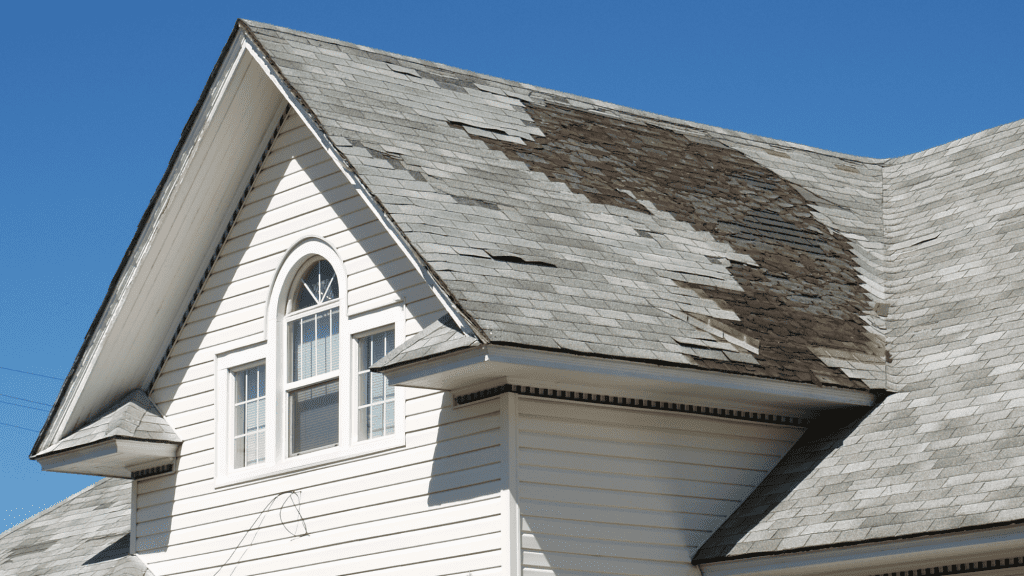
Safeguarding your home from unexpected roof damage in Glenmont, Ohio, relies heavily on the insurance company’s role in offering crucial financial protection. Navigating the intricacies of insurance coverage, though, can be a challenging task. A profound comprehension of policy distinctions, such as Actual Cash Value (ACV) and Replacement Cost Value (RCV), coupled with an awareness of common exclusions, can substantially impact how your claim is managed and ultimately resolved.
Policy Types: ACV vs RCV
When it comes to roof coverage, an Actual Cash Value (ACV) policy is tailored to facilitate the replacement process by reimbursing you for your roof’s depreciated value, minus the deductible. This means you’ll be compensated based on the current value of your roof at the time of the damage. However, it’s essential to note that this may not cover the entire cost of repairs or replacement.
On the flip side, a Replacement Cost Value (RCV) policy offers more extensive coverage. It covers the entire cost of roof replacement, providing funds for a new roof according to current prices and materials. Under an RCV policy, you’ll first receive a check for the actual cost value of your roof. After the completion of the roof replacement, a second check for the remaining amount will be issued, contingent upon meeting all specified requirements.
The choice of a suitable policy for your needs can greatly impact the payout you receive in the event of a roof damage claim, making it an important decision. It is essential to:
- Review your insurance policy
- Understand the differences between ACV and RCV
- Consult with your home insurance company to ensure you have the appropriate coverage for your specific situation.
Common Exclusions
Safeguarding your home from weather-related roof damage in Glenmont, Ohio, with homeowners insurance is a wise decision, but it’s equally important to be aware of common exclusions that might impact your claim, like:
- improper installation, which refers to deviating from the manufacturer’s instructions or local building codes during roof installation. Such deviations can lead to accelerated wear and tear and potentially invalidate your roof’s warranty.
- Neglecting routine maintenance is another exclusion, involving tasks like cleaning gutters and removing debris. Damages resulting from insufficient maintenance may not be covered by your insurance policy.
- Additionally, some policies may exclude coverage for specific weather events, such as hurricanes or earthquakes.
A thorough review of your insurance policy is essential to understand these exclusions and ensure you have the appropriate coverage for your roof. Inadequate maintenance occurs when a roof is not regularly inspected and maintained according to the manufacturer’s instructions or local building codes, possibly resulting in premature deterioration and warranty invalidation.
Understanding these exclusions and taking steps to ensure proper roof installation, regular maintenance, and protection from excluded weather events can help you avoid potential claim denials and ensure you receive the coverage you deserve.
Glenmont Roof Damage - Filing an Insurance Claim
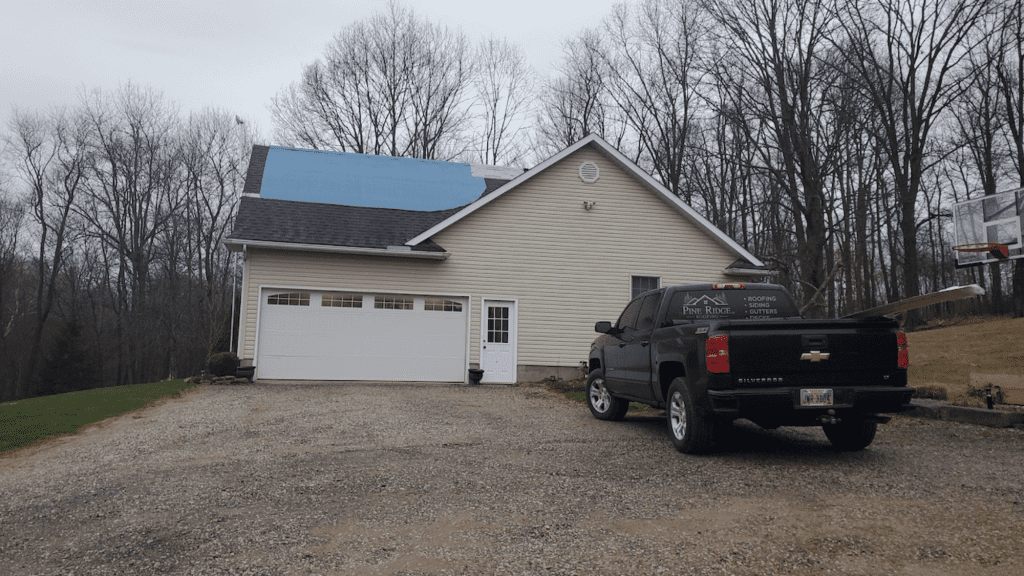
Grappling with roof damage in Glenmont, OH, and filing an insurance claim demands a careful and thorough strategy. Successfully navigating this process involves adeptly documenting the damage, establishing effective communication with insurance adjusters, and making informed choices when selecting a roofing contractor.
This guide is your roadmap, offering detailed steps and insightful tips to ensure a hassle-free and successful insurance claims experience for roof damage.
Documenting the Damage
Thorough documentation of the damage is crucial before filing an insurance claim for roof damage. Here are the steps to follow:
- Take photos of the damaged areas, including any missing shingles, lifted flashing, or cracked tiles.
- Create a list of the damage and make detailed notes, including dates, times, and any relevant weather events that may have contributed to the damage.
- If you’ve already taken steps to prevent further damage, such as attaching tarps to your roof, be sure to take photos of these measures as well.
Once you’ve documented the damage, obtain an estimate from a qualified roofing contractor to determine the cost of repairs or replacement. This estimate will not only help you understand the extent of the damage but will also serve as valuable documentation when submitting your claim to your insurance company. Having a thorough and accurate record of the damage will significantly improve your chances of a successful claim.
Working with Adjusters
In Glenmont, the roof damage claims process relies heavily on the involvement of insurance adjusters, who assess the damage and determine the value of your claim payout. Achieving the best possible outcome for your claim requires effective collaboration with adjusters, emphasizing accurate information, meticulous record-keeping, and transparency throughout the process.
In the case of a denied claim, exploring resolution options is essential:
- Requesting a different adjuster from your insurance company for a second opinion is one avenue.
- Consulting a structural engineer for a thorough inspection and evidence of the damage is an alternative approach.
- As a last resort, legal avenues can be pursued.
By understanding the adjusters’ role and preparing for effective collaboration, you significantly increase the likelihood of a successful claim. This ensures you receive the necessary coverage to repair or replace your roof, damaged in Glenmont.
Choosing a Reputable Roofing Contractor
Opting for a trustworthy roofing contractor is crucial for ensuring top-notch work and a seamless insurance claims process. When exploring roofing contractors for insurance claims, it’s essential to assess their experience in dealing with claims, turnaround times, and their ability to collaborate with adjusters. A competent roofing contractor can meticulously document damage in line with insurance companies’ standards and offer an expert evaluation.
Choosing a local and dependable roofing contractor, such as Pine Ridge Roofing, ensures confidence in the handling of your roof repair or replacement. Their team of certified roofers and insurance specialists is dedicated to assisting with storm repair, restoration, and insurance claims in Glenmont, Ohio, and nearby areas. Opting for an established roofing contractor guarantees the safety and integrity of your home.
Glenmont Roof Damage - Preventative Measures and Maintenance
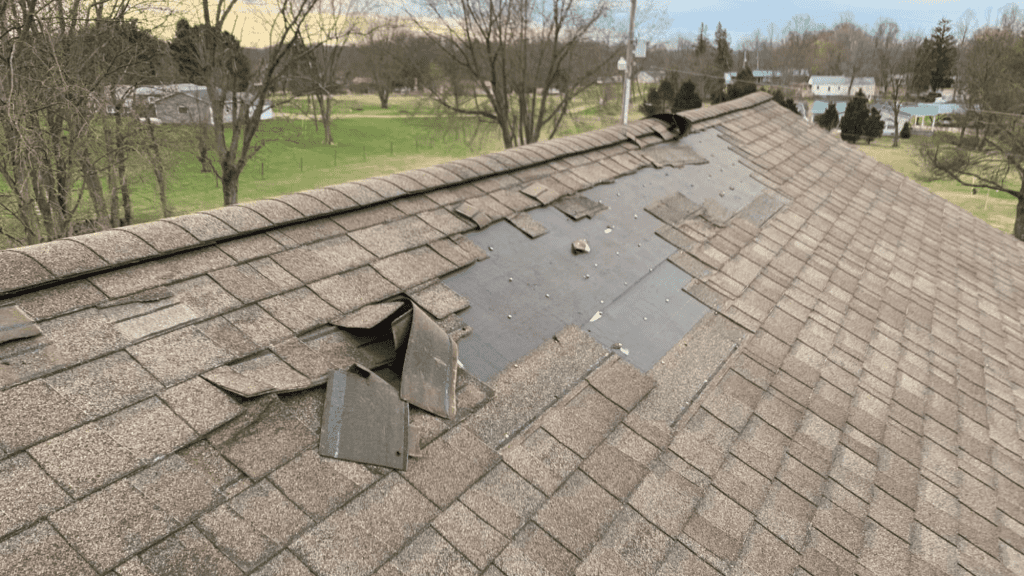
Acting as a financial safety net for weather-related roof damage, insurance is a valuable asset. However, proactive steps are essential to avoid hefty repair costs altogether. Regular inspections, ensuring adequate ventilation, and effective waterproofing play pivotal roles in maintaining your roof’s excellent condition. By implementing these preventive measures, you not only minimize the risk of weather-related damage but also contribute to the overall durability of your roofing structure.
Routine Inspections
Regular roof inspections serve as an effective method to spot and tackle potential issues before they escalate into significant problems. Inspections should evaluate the roof for signs of:
- Deterioration
- Missing or damaged shingles
- Debris in the gutters
- Roof ponding
Regular roof inspections are highly recommended, especially in areas prone to extreme weather conditions. Conducting these inspections at least twice a year is essential for proactive maintenance.
By identifying and addressing minor issues early on, you can avoid costly repairs or the need for a complete roof replacement. For a thorough and expert assessment, consider hiring Pine Ridge Roofing, a reputable contractor known for maintaining roof integrity. Schedule your free roof inspection today and ensure the longevity of your roof.
Proper Ventilation and Waterproofing
Preventing moisture buildup, ice dams, and other weather-related roof damage hinges on the implementation of proper ventilation and waterproofing practices. This includes:
- Ensuring good indoor air quality
- Implementing effective home ventilation
- Using exhaust fans and air purifiers
- Installing a reliable ventilation system
- Properly attaching roof ventilation products.
Inadequate attention to these aspects may result in moisture accumulation and ice dams, potentially leading to costly repairs and replacements. By prioritizing proper roof ventilation and waterproofing, you can effectively reduce the risk of damage and maintain the performance and longevity of your roofing materials.
Pine Ridge Roofing: Your Partner in Roof Repair and Insurance Claims

Pine Ridge Roofing, serving Glenmont, Ohio, and surrounding areas, specializes in:
- Storm damage repairs
- Insurance claims
- Emergency inspection
- Tarping services
- Assistance with insurance claims for weather-related roof damage
- Roof replacements
- Siding repair and replacement
- Gutter repair and replacement
- Leaf Guard Installation
- Deck building
For over 25 years, our team, comprised of certified roofers and insurance specialists, has been steadfast in delivering top-tier roof repairs. Our mission is to protect and restore your home in the aftermath of weather-related damage events.
Emergency Inspection and Tarping Services
Suspecting roof damage? Schedule a free emergency inspection with Pine Ridge Roofing to evaluate the extent of the damage and determine the best course of action for repairs or replacement. Our team of experts performs a thorough assessment of your roof, identifying any missing shingles, lifted flashing, or cracked tiles that may need immediate attention.
In addition to emergency inspections, Pine Ridge Roofing offers the following services:
- Tarping services provide temporary protection and prevent any further damage to your roof.
- Act quickly by securing your roof with tarps to minimize the risk of additional damage.
- We ensure your home stays safe and secure throughout the insurance claim process.
Insurance Claim Assistance
Navigating the insurance claim process can be overwhelming, but Pine Ridge Roofing is here to help. They offer the following services:
- Assisting with insurance claims
- Representing homeowners
- Negotiating with insurance companies
- Providing quality roof replacement services
Pine Ridge Roofing’s proficiency in insurance claims ensures that you achieve the optimal outcome, letting you focus on the safety and well-being of your family. Their insurance claim support involves:
- scheduling emergency inspections
- tarping damaged areas
- representing homeowners during insurance adjuster meetings
- negotiating with insurance companies
- utilizing high-quality products like Owens Corning shingles and synthetic felt for roof replacements.
With Pine Ridge Roofing, be confident that your roof repair or replacement will be managed with professionalism and efficiency, providing you peace of mind and the security of a well-protected home.
Summary
Tackling roof damage in Glenmont, Ohio caused by weather demands careful consideration from homeowners. It’s essential to discern the types of damage, skillfully navigate insurance claims, and proactively care for your roof. This extensive guide provides invaluable information. Teaming up with Pine Ridge Roofing, a reliable contractor, ensures you’re well-prepared to handle any weather-related roof damage, securing the well-being of your home and family.
Frequently Asked Questions
Does Home Insurance Cover Roof Storm Damage?
The coverage of roof storm damage in your home insurance policy is contingent on the specific details outlined in the plan. Typically, insurance plans provide coverage for damage resulting from hail, strong winds, destruction caused by falling objects, and internal damage due to roof storm damage. If a storm results in the destruction of your roof and subsequent rainwater damage to the ceiling, your insurance policy is generally designed to cover the repairs for both the roof and ceiling.
Are blown-off shingles covered by insurance?
Recognizing the pivotal role a roof plays, insurance companies commonly include provisions for covering the expenses related to replacing a roof that suffers damage, particularly when it involves the unexpected loss of shingles.
What is considered wind damage to shingles?
The aftermath of strong winds often manifests in shingle damage, presenting as tearing, creasing, or outright detachment from the roof. In the case of three-tab shingles, the risk escalates due to repeated lifting or flapping. It’s crucial to recognize that unsealed shingles remain resilient unless subjected to evident physical mat damage.
My roof doesn’t leak. Does this mean my roof is okay?
Simply because your roof isn’t showing leaks doesn’t mean it’s in optimal condition. Roof damage can linger unseen, and leaks may not become apparent until a future rainfall. At Pine Ridge Roofing, our adept professionals utilize specialized tools and techniques to uncover moisture beneath roofing materials and identify hidden areas of damage. Don’t let concealed issues persist unnoticed—contact us for a free inspection today!
What is the most common roof damage?
A common challenge is roof damage in Glenmont, Ohio, particularly manifested as leaking roofs. This is frequently attributed to broken shingles, and inadequate flashing near chimneys or gutters, and around vents or pipes.
